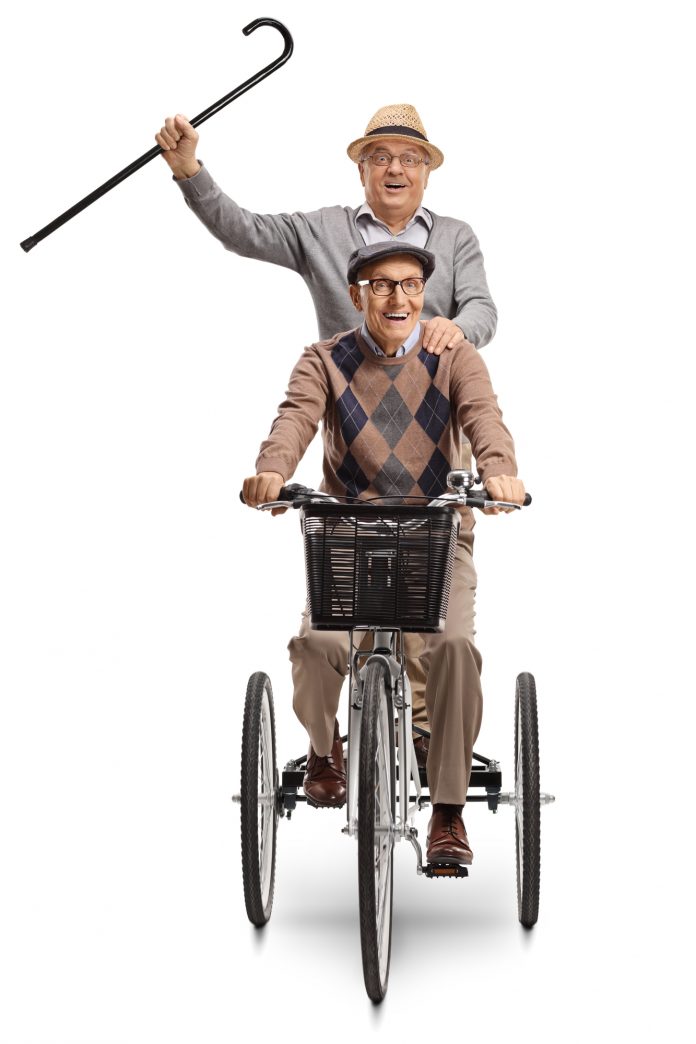One of the major difficulties that seniors face as they age is how to stay active. Unfortunately, many life-long exercise routines like running and biking simply cause too much pain for seniors. In addition, many of the mobility options that seniors have to get around town are motorized, so they can’t be used as a way to stay active. Adult tricycles offer a middle ground mode of transportation between bicycles and motorized scooters. For many seniors, they present a self-powered mobility option that is less dangerous than a traditional bike and puts less wear and tear on your body.
Is an adult tricycle right for you? Let’s take a look at how these three-wheeled rides can help seniors continue to stay active.
Why are Adult Tricycles Better than Bikes for Seniors?
While adult tricycles require pedaling just like traditional bikes, just about everything else about how they interact with your body is different – and better suited for seniors.
To start, you have three wheels instead of two. That means there’s no balancing act like there is with a two-wheeled bicycle. A tricycle won’t fall over while you’re trying to get onto it, and there’s much less risk of tipping over if you lose your balance or come to a sudden stop. So, seniors can take as much time as they need in order to situate themselves in the tricycle before taking off.
Another major difference is the seat. Traditional bike saddles are extremely tough on seniors, particularly those with upper back or hip pain. They force you to curve your spine forward to reach the handlebars, too, which can cause upper back, neck, and wrist pain.
Adult tricycles do away with the saddle in favor of a reclined seat, complete with back support. Seniors can also add lumbar pads or any of the other pain-relieving devices they use at home to sit in the tricycle seat. There’s no need to lean forward, since the steering controls are right in front of the seat, and thus no pressure on your neck or wrists.
Finally, adult tricycles relieve pressure on seniors’ knee and ankle joints. This pressure normally occurs on a two-wheeled bicycle because your hips are stacked over the pedals and you’re pushing down to propel yourself. On a tricycle, the pedals are out in front of you. That’s a more comfortable position for many seniors to push in and it does away with most of the grinding that your joints experience while pedaling.
How to Find the Right Adult Tricycle
Finding the right adult tricycle is first and foremost about comfort. You need to be able to easily get into your bike and to reach the pedals, or else you won’t be willing to ride it very often.
Beyond that, adult tricycles vary quite a bit. There are speed-driven models designed for seniors who spent their whole lives riding bikes, as well as more beginner-friendly models that are suitable for anyone coming to riding later in life.
Adult tricycles offer a low-impact way for seniors to stay active long after other workout routines are no longer possible. Whatever adult tricycle you end up choosing, make sure that you ride it safely. Many of the same rules that apply to bicyclists apply to tricyclists, including knowing your limits and riding with a buddy.






















